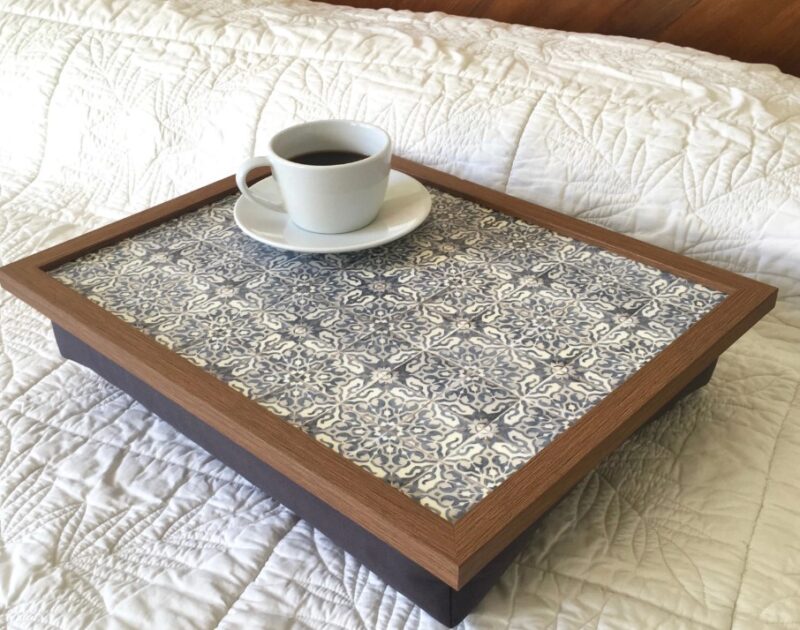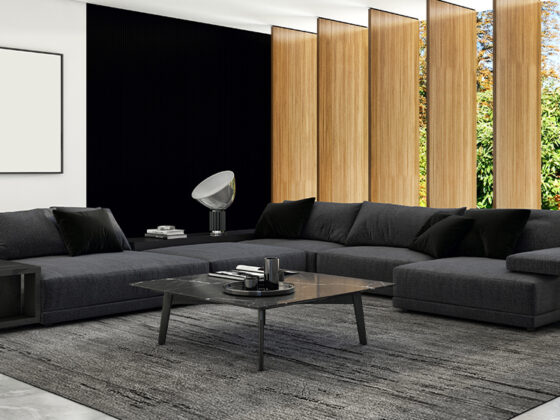A cushioned lap tray might not sound like a game-changing item—until you use one and realize how often you need a flat, comfortable surface that can move with you. Whether it’s breakfast in bed, emails from the couch, or a quiet moment journaling near the window, the right lap tray improves both comfort and convenience.
I’ve gone through a fair share of models—some too bulky, some too flimsy, and finally a few that just worked. If you’re thinking of buying trays, the small details make all the difference. This guide breaks down exactly what to look for, based on practicality, comfort, and real-world use.
Key Highlights
- Choosing the right tray size ensures stability for work, meals, and leisure.
- Cushion materials directly affect long-term comfort and heat management.
- Sturdy tray tops matter for writing, typing, and eating without wobble.
- Easy-to-clean surfaces and washable covers help with hygiene and durability.
- Look for trays with portability features if you’ll be moving it often.
- Designs vary greatly—pick one that suits your daily habits and space.
Getting the Right Size and Shape
Start here. Most people either go too small and can’t fit everything they need, or too large and end up with a tray that’s clunky and uncomfortable to balance on their lap. Sizing matters depending on what you use the tray for: a 13-inch laptop, a large dinner plate, a coloring book, or even a combination of devices and snacks.
Measure the dimensions of the items you plan to use most. A good tray should provide at least 1–2 inches of extra space around your laptop or plate for stability and wrist movement. And don’t forget to factor in the width of the cushion—it adds bulk and affects how it rests on your legs.
Shape is also a hidden but critical detail. Some trays are curved at the front for ergonomic arm positioning, while others are fully rectangular to maximize surface area. If you frequently write or sketch, curved edges are easier on the wrists. For laptop use, flat designs tend to allow better placement and heat dissipation.

How Cushion Material Affects Comfort
The cushion is where the real comfort lives—and this varies significantly across models. There are three common types:
- Microbead cushions are flexible, lightweight, and mold well to your legs. They’re usually quieter when moving the tray around, and they stay cool longer. However, over time, microbeads may compress and lose volume.
- Memory foam is a denser, more supportive option. It maintains shape over time and offers stability, especially for heavier devices. On the downside, it can retain body heat and become uncomfortable if used for long sessions.
- Polyester fiberfill is typically found in budget trays. It’s soft and very light, but not always supportive. These cushions can get uneven or lumpy with daily use.
Another detail often ignored is fabric type. The underside of the cushion should be breathable to prevent sweating. Cotton blends are ideal for softness and temperature regulation. Avoid vinyl or full polyester unless you’re prioritizing water resistance or stain protection.
One more thing to check: whether the cushion cover is removable and machine washable. Life gets messy—having the option to clean it easily will save you time and frustration later.
Why the Tray Surface Matters
Let’s talk tray tops. You want something solid enough to support the task at hand but light enough to carry around comfortably. Most quality trays use either MDF wood, laminated plastic, or lightweight plywood. The finish should be smooth but not slippery—some cheaper trays use glossy plastic that causes items to slide off at the slightest movement.
Pay close attention to these features:
- A raised edge or border is crucial if you’ll be eating meals or using the tray in bed or on soft furniture. It prevents cups and utensils from sliding off.
- Anti-slip pads or textured surfaces are helpful for writing or device use.
- Water-resistant coating is a major plus if you’re drinking coffee or tea, or letting kids use it for crafts or drawing.

Portability and Everyday Handling
Don’t underestimate how often you’ll want to pick up and move your tray—whether that’s from couch to bed, or from your lap to a nearby shelf. Weight is a huge factor here. A heavier tray may feel stable but quickly becomes a hassle to use for extended periods. On the other hand, if it’s too light and flimsy, it may slide off your lap or feel unstable with heavier items on top.
Good trays often include:
- Integrated side handles or cut-outs to make carrying easier.
- Compact, slimline designs for easy storage.
- Non-slip bottoms so they don’t shift on soft surfaces.
Also, if multiple people will use the tray—kids, seniors, guests—it’s best to choose a neutral weight and design that feels universally comfortable and practical.
Cleaning and Durability Over Time
If there’s one thing I’ve learned, it’s that lap trays collect crumbs, spills, lint, and random marks surprisingly fast. So don’t just focus on looks—check what kind of wear the tray can take.
For the tray top, a laminated or sealed surface is ideal. You can wipe it down easily with a damp cloth, and you don’t have to worry about stains from pens, sauces, or sweat from a warm laptop.
For the cushion, as mentioned earlier, removable covers are a must-have. If the cushion is fixed, at least make sure the fabric is spot-cleanable. Avoid trays with delicate prints or textures unless they’re covered by a durable clear coating.
And if the tray has hinges, joints, or any moving parts (like adjustable angles), check the materials used. Cheap plastic fittings may crack, especially under daily use. Look for reinforced edges or metal hinges if durability is a concern.

Choosing Based on Use Case
To help make the decision easier, here’s a breakdown of common use cases and what features to prioritize:
|
Usage |
Recommended Features |
| Laptop work | Large, flat surface, heat-resistant top, wrist support, memory foam cushion |
| Meals on the couch | Raised edge, water-resistant surface, washable cushion, curved shape |
| Drawing & journaling | Smooth top, good surface grip, curved front, light frame |
| Seniors with mobility | Lightweight, microbead cushion, handles, easy-to-clean fabric |
| Kids’ activities | Stain-resistant surface, durable materials, soft cushion, fun but simple design |
This table isn’t exhaustive, but it gives a clear starting point depending on what you prioritize most in daily use.
Final Thoughts
Buying a cushioned lap tray might seem like a small upgrade to your day-to-day routine, but it can be surprisingly impactful. Whether you’re easing into remote work, looking for mobility-friendly tools for a loved one, or just want a better way to enjoy your coffee and tablet from the couch, the right tray makes all the difference.
The key is not rushing the choice. Think about your main use case, your comfort preferences, and your space constraints. Then choose a tray that aligns with those needs rather than just picking the first stylish option you see. Practicality, comfort, and easy maintenance should always come first.
Invest once in a well-designed tray—and you’ll be using it daily, without even realizing how much it’s improved your routines.



